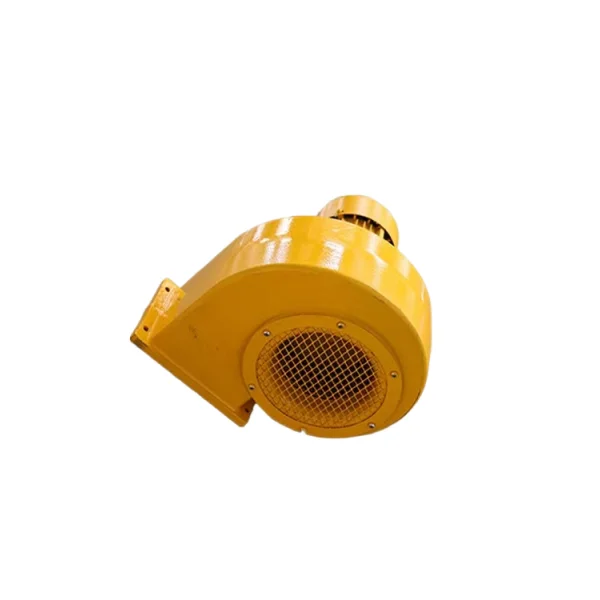In a world where comfort and air quality are paramount, cooling ventilation fans have become indispensable in both residential and industrial applications. Whether it's for controlling temperature, improving air circulation, or reducing humidity, these systems play a crucial role in creating healthy and pleasant environments. This comprehensive guide Shuoer will delve into the various types of cooling ventilation fans, their benefits, key features, and how to choose the right fan for your needs.
What is a Cooling Ventilation Fan?

A cooling ventilation fan is a device designed to enhance airflow in a space, helping regulate temperature, improve ventilation, and reduce humidity. These fans are typically used in environments where air circulation is critical, such as homes, offices, factories, or data centers. The fan works by drawing in warm air and expelling it, replacing it with cooler, fresher air. This process not only lowers the temperature but also prevents the build-up of stagnant air, improving indoor air quality and comfort.
Cooling ventilation fans can come in various forms, ranging from exhaust fans to ceiling fans, box fans, and industrial ventilation systems. Each type is suited for specific applications, offering tailored solutions for various cooling and ventilation needs.
Benefits of Cooling Ventilation Fans
The advantages of cooling ventilation fans extend far beyond just temperature control. Below are some of the key benefits of using these fans in your home, office, or industrial setting:
1. Improved Air Quality
One of the primary benefits of a cooling ventilation fan is the improvement in air quality. By circulating fresh air, these fans prevent the buildup of harmful pollutants such as carbon dioxide, smoke, and other volatile compounds. In spaces like kitchens and bathrooms, fans help remove moisture, preventing mold growth and reducing odors.
In industrial environments, ventilation fans help remove fumes and contaminants from the air, improving worker safety and preventing respiratory issues. For data centers, cooling ventilation fans are critical for ensuring that servers and equipment remain cool, preventing overheating and ensuring that air quality stays at optimal levels.
2. Energy Efficiency
While cooling ventilation fans are designed to improve comfort by regulating temperature, they are also much more energy-efficient compared to traditional air conditioning units. Fans consume significantly less energy than air conditioners, which helps to reduce electricity bills, particularly during hot months. By circulating air efficiently, they make spaces feel cooler without relying on expensive, energy-draining cooling systems.
Additionally, using fans in combination with air conditioning can help reduce the load on cooling units, resulting in energy savings and improved efficiency.
3. Cost-Effective Cooling
When compared to other cooling methods like air conditioning, cooling ventilation fans are relatively inexpensive to purchase and maintain. The cost of running a fan is also far less than running an air conditioning unit, making it a more budget-friendly option for both residential and commercial settings.
Fans are particularly beneficial in areas with mild climates or as a supplementary cooling solution in spaces that do not require constant cooling. For large buildings or homes, installing a cooling ventilation fan system can provide significant long-term savings.
4. Enhanced Comfort
By improving air circulation and reducing heat buildup, cooling ventilation fans create a more comfortable environment. Whether you are trying to cool a room on a hot day or improve airflow in a stuffy workspace, fans help regulate temperature and make spaces feel cooler.
In areas such as offices, factories, or gyms, where people work for extended periods, adequate ventilation is essential for maintaining productivity and comfort. Cooling ventilation fans ensure that employees stay comfortable, which can improve focus and performance.
5. Humidity Control
In humid environments, excess moisture can lead to discomfort, poor air quality, and even structural damage. Cooling ventilation fans are effective at reducing indoor humidity by expelling warm, moist air and promoting the circulation of dry air. This is especially crucial in areas such as basements, bathrooms, and kitchens, where humidity levels can fluctuate frequently.
By controlling humidity, fans help prevent the growth of mold and mildew, protecting both health and property.
How to Choose the Right Cooling Ventilation Fan
Selecting the right cooling ventilation fan depends on several factors, including the size of the space, the specific needs of the environment, and the desired cooling effect. Here are some tips to guide your decision:
1. Space Size
Consider the size of the room or area you need to cool. Larger spaces, such as warehouses or offices, may require more powerful cooling ventilation fans, like industrial fans or ceiling fans. For smaller rooms, a box fan or exhaust fan may suffice. Always check the fan’s airflow rating, typically measured in CFM (cubic feet per minute), to ensure it provides adequate ventilation for your space.
2. Fan Type
Different fan types serve different purposes. For targeted airflow in a specific area, a box fan or exhaust fan may be more suitable. For continuous, widespread airflow in larger rooms or open spaces, a ceiling fan or industrial ventilation fan might be a better choice. Determine whether you need a stationary fan or one that can be moved easily based on your needs.
3. Noise Levels
Noise is an important consideration, particularly in environments like offices, bedrooms, or quiet public spaces. Look for fans with quiet operation if minimizing noise is important. Many modern cooling ventilation fans come with noise-reducing features for quieter performance.
4. Energy Efficiency
For cost-effective and eco-friendly cooling, choose fans with energy-efficient motors and features such as adjustable speed settings. This allows you to control energy consumption based on the cooling needs of the space, further reducing costs.
5. Maintenance and Durability
Consider the long-term maintenance requirements and durability of the fan. Opt for high-quality materials that can withstand extended use and are easy to clean. A cooling ventilation fan should be durable enough to last for years, especially in high-demand environments.
Cooling ventilation fans are an essential part of modern comfort, offering a cost-effective, energy-efficient, and reliable solution for controlling temperature, improving air quality, and enhancing overall comfort in homes, offices, and industrial environments. Whether you're looking to reduce humidity, improve airflow, or provide cooling relief during the summer months, there's a cooling ventilation fan for every need. By selecting the right fan for your space, considering factors such as size, efficiency, and noise level, you can improve ventilation, save on energy bills, and create a more comfortable and healthy environment. Cooling ventilation fans offer more than just relief from the heat—they help create spaces where people can work, live, and thrive.
https://www.shuoermetals.com/blower.html
www.shuoermetals.com
Wuxi Shuoer Intelligent Technology Co., Ltd.
